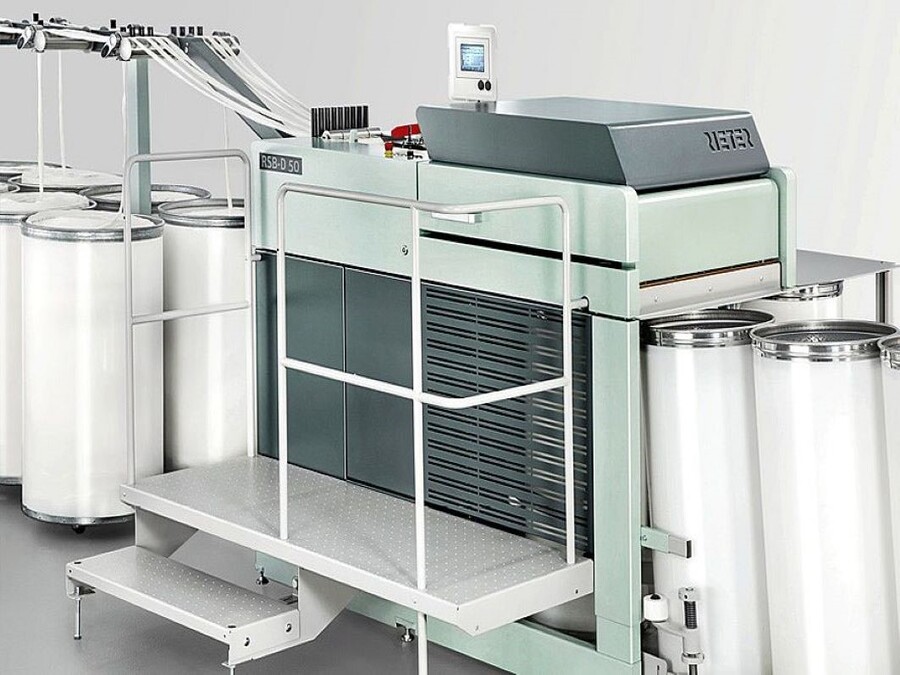Rieter mouse-free coiling with a clean tube
The headquarters of Gupta Threads Ltd. are at Samana, Punjab, India’s Dist. Patiala. They produce 100% cotton yarn in their 3 744-rotor spinning mill, with counts ranging from Ne 7 to Ne 30. In their mill, they only use Rieter draw frames, including one RSB-D 50 autoleveler draw frame and four earlier RSB double-head models.
Introduction
Rieter, a leading innovator in textile machinery, has introduced an advanced solution to enhance coiling processes in their systems—Mouse-Free Coiling with CleanTube. This technology represents a breakthrough in addressing common challenges associated with coiling in the textile industry.
The Provocation
The spinning industry faces a significant problem in producing economical yarn because of the sudden increase in cotton prices and the continual growth in short fibres in recently sold and supplied cotton. Typically, the cost of raw materials makes up 55 to 65% of the entire cost of making yarn. A small increase in yarn realisation can produce remarkable outcomes. The delivered card sliver has more debris and short fibre due to the spinners’ realisation pressure. In the sliver duct of the coiler during can filling, trash particles and short fibres may gather while processing such waste- and oil-rich blends on a draw frame.
The draw frame stops when the can is full, causing what is referred to as “mouse” accumulation.
On a rotor spinning machine, spinners frequently remove roughly half of the layer of sliver that contains the mouse during batch creel. The operator has to do more work as a result, and soft waste is produced.
The mouse, however, can generate garbage deposits in the rotor groove if it is not taken out of the sliver, which will then cause the ends to start spinning.
Additionally, if the mouse contaminates the yarn, it results in serious flaws in the fabric and yarn. If a draw frame stops while the can is filled, the mouse falls inside. The inability of the operator to remove the mouse as a result causes the previously described issues.
The Solution
The choice of the coiler speed is intelligently controlled by CLEANtube, which keeps short fibres and garbage from building up in the silver duct. CLEANtube makes sure the sliver contacts every surface of the coiler tube and keeps the tube clear of buildup. As a result, a mouse-free slice is created, guaranteeing consistency in quality and avoiding losses in money.
Key Features
Mouse-Free Technology:
Rieter’s Mouse-Free technology ensures a pest-free coiling environment, mitigating potential damages caused by rodents. This innovative feature enhances operational efficiency and protects valuable machinery components.
CleanTube Integration:
The incorporation of CleanTube further sets Rieter apart by promoting a clean and hygienic coiling process. This feature not only prevents contamination but also contributes to maintaining the overall quality of textile production.
According to a Gupta in-mill study, using CLEANtube has the following benefits:
Enhanced Equipment Longevity:
The Mouse-Free Coiling with CleanTube solution safeguards machinery from rodent-related issues, reducing the risk of damage and extending the lifespan of the equipment.
Improved Product Quality:
By minimizing contamination risks, CleanTube ensures that the textiles produced maintain high standards of quality, meeting the stringent requirements of the industry.
Operational Efficiency:
The integrated technologies streamline coiling processes, leading to increased operational efficiency and reduced downtime.
As the operator no longer needs to manually remove the mouse from the drawing frame, 500 labour hours can be saved annually.
An average amount of layer is normally removed when a mouse is manually removed. This is equivalent to ten metres or so in length. Even though it can be recycled as soft waste, doing so results in additional conversion costs for blowroom, carding, and drawing.
By avoiding these additional costs, RSB can be saved up to EUR 1 300 annually. Ends down are minimised by removing the mouse. Every tenth mouse that ends up at the rotor spinning machine is about average.
An increase in yarn mass of up to 100% with a length of approximately results when spinning a mouse.
Finally, these defects are visible in the woven fabric and mean a high risk of rejection of the fabric. Such financial damages are avoided.
Rieter’s Mouse-Free Coiling with CleanTube represents a significant advancement in textile machinery technology, addressing challenges related to rodent interference and ensuring a clean, efficient, and high-quality coiling process.
Source

